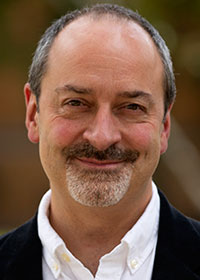 Paul Wright, NIU’s EC Lane and MN Zimmerman Endowed Professor in Kinesiology and Physical Education, is celebrating the recent publication of ”Teaching Social and Emotional Learning in Physical Education.”
Paul Wright, NIU’s EC Lane and MN Zimmerman Endowed Professor in Kinesiology and Physical Education, is celebrating the recent publication of ”Teaching Social and Emotional Learning in Physical Education.”
Copyrighted by the Society of Health and Physical Educators (SHAPE America) and published by Jones & Bartlett Learning, the book ”is the ideal resource for understanding and integrating social and emotional learning (SEL) competencies into the structure of a physical education program, alongside physical activity and skill development goals.”
Featuring contributions from Department of Kinesiology and Physical Education colleagues Jenn Jacobs, Jim Ressler, Zach Wahl-Alexander and Laurie Zittel, as well as doctoral student Karisa Kuipers, it addresses the gap between ”the multiplicity of opportunities to connect physical education with SEL” and ”the lack of a comprehensive resource focused on intentional integration.”
Wright recently answered questions from the College of Education’s Ed News.
What inspired you to write the book?
From the time I began working on my master’s degree at the University of Illinois at Chicago with Don Hellison, I have been interested in how to promote positive attitudes and values as well as personal and social skills through sport and physical activity. Don had developed a teaching model for this called Teaching Personal and Social Responsibility (TPSR) model. He started this work nearly 50 years ago and I’ve been doing it since the late 1990s. While it began as an alternative approach to teaching and coaching physical activity, the field has developed a very strong interest in such topics. In fact, the broad idea of social and emotional learning (SEL) has been a major trend in education for the last 20 years. More recently, in the last five years or so, it has been picked up by the field of physical education and is one of the major focal points currently. Based on my year of practical experience and research on related topics, I was excited to meet a clear need by providing a comprehensive resource (i.e., our book) on the subject. There are a lot of resources on SEL application in classroom and school-wide approaches, but until our book came out, there was not a definitive source that was based entirely in physical activity settings.

Why has the field of physical education lacked a comprehensive resource focused on intentional integration of social emotional learning?
Historically, this field has placed most of its focus on psychomotor development, physical fitness, physical activity promotion, etc. While SEL and related aspects of the learning experience have always been a key to good teaching, it is just recently become a major focus in the field. Don’s original work on the TPSR model was considered alternative and out on the margins for most of his career. Over the last couple decades I’ve seen the margins move to the point where approaches like his are now in the center. As with many trends in education, the field of PE tends to lag behind the general field. This was true with adopting content standards, developing evidence-based practice, and now addressing the social and emotional needs of students. Recent social unrest, increased awareness on systemic injustice, (e.g., the Black Lives Matter movement), and social distancing stemming from COVID-19 have only served to highlight why we need to be aware of and address the whole child.
Who should read this book – and why?
We hope practicing P.E .teachers and coaches will read this book and consider ways it might inform their practice. We also hope that many physical education teacher education programs will adopt this text to prepare the next generation of teachers. Beyond that, we have included so much research and policy analysis that we think this book could be used by administrators, policy makers, and researchers interested in using physical activity programs as a level for supporting positive youth development and social change.

Why do the strategies you present work?
As noted above, even though the focus on SEL as a specific construct is relative new to physical education and sport pedagogy, we have many decades of practical field-tested strategies that are strongly aligned with SEL. I mentioned Don Hellison and the TPSR model several times, but we have other student-centered best practices that have been developed for decades in sport and P.E. settings. In short, many of the pieces were already in place but they needed to be looked at in a fresh light, aligned with a coherent framework, and presented with strategies to make them more intentional and explicit.
What did you learn – or find most fascinating – in writing the book?
My co-editor Kevin Richards and I also invited many authors to contribute individual chapters based on their expertise. We learned so much from them as in each case they applied this SEL lens to their topic (e.g., preschool physical activity, adapted physical education, afterschool programs, and a range of instructional models). It also validated our belief that within P.E. and sport, we actually have an ideal setting to promote SEL. Unlike classroom settings, physical activity is inherently active, interactive, social, dynamic, emotionally charged, etc. So we have a lot of great strategies in our toolbox that can be very informative and useful to the broader field of education and the larger SEL movement.
In short, it’s a two-way street. We can be more effective by adopting this framework and being more consistent and explicit in our approach. At the same time, we have a lot of practical, field-tested strategies and structure that we can share with other educators who may be looking for more authentic ways to engage students in learning and applying SEL.

